anxiety & aggression support

free shipping over $100 (USA & Canada)
1-877-937-4372 the pet expert hotline
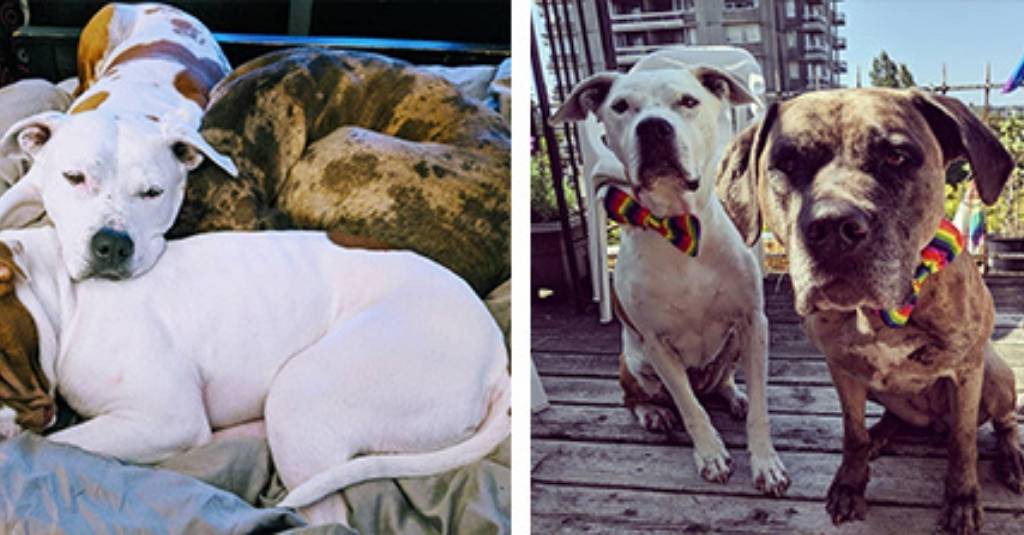
September has rolled back around and before we know it the leaves are falling and the children are going back to school. After a long summer of fun, some of our dogs are also now without their human playmates, whether they are going back to school, off to college, or simply back to work.
Many dogs attend daycare where they can spend the day with other dogs, playing and getting exercise. Some make more effort to schedule play dates, or go and stay with canine friends for the day. Whichever socializing your dog undergoes can have challenges. Some dogs are friendly, and some are not! The way your dog behaves around other dogs is very important in how they are perceived by the other dog.
Puppyhood is the best time for socializing your dog, whilst everything is still new.
Puppyhood is the best time for socializing your dog, whilst everything is still new. However many pups can miss out on this, maybe they were a stray, or a rescue where the previous owners didn’t put in the time. Many times adult pups can change. What once seemed fun and exciting could now be attached to a negative association. We have some tips to help socialize your dog who is older than a puppy. These tips will work in all situations – be it in the dog park, at daycare, or on a pup play date!
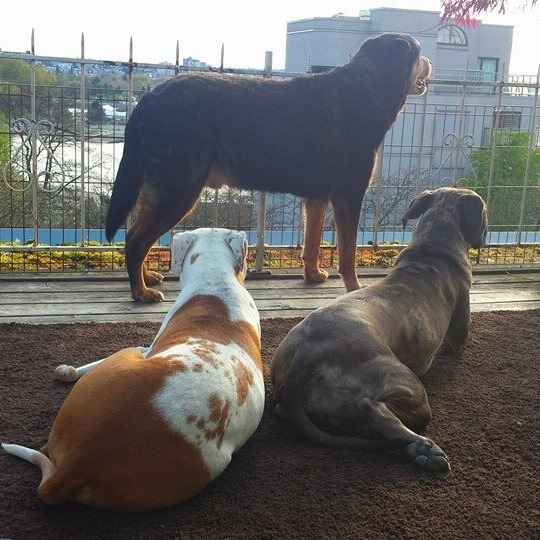
Stay calm – our dogs are masters at reading our body language. To be able to effectively train and reassure a dog you must first start off in a zen state of mind, even when your dog is getting agitated or upset.
Be positive – Having a positive association with new situations is key for a dog. This positive engagement can be accentuated by us in a tone of voice and cuddles
Be informed on pet body language – Read upon the tell-tale signs that your dog is not happy, noticing these small changes can help you realize when is enough is enough. Some pets will make their unhappiness known loudly, by barking, whining, snarling, whilst some will be more shy, like flat ears, and a drooping tail.
Introduce the smell first – If you are having a friend or a sitter come over to check on your kitty or your rescue dog while you are away, get them to lend you a jacket or a scarf beforehand. You can use that piece of clothing to help your pet familiarize with their sitter’s smell. Most professional sitters will cooperate when you tell them that you are dealing with an anxious or a scared pet.
Organize their first date – For the first 1-2 appointments be around for your rescue dog or cat when the sitter comes by. Talk to your sitter in a nice calming voice and extend the happy vibes to your pet too. Get them to identify this new person as a friend.
Music always helps build associations.
Find some calming music – Music always helps build associations. Just the way some old jingles take you back to childhood, a special track or a calming rhythm can help your pet relax and let go. Try different tracks until you find the one that your pet loves the most. Keeping it playing when the sitter comes visiting is a great idea.
Exclusive treats for their meetings – Keep aside some exclusive treats for these encounters and let your sitter know that they can be used as conversation starters or as rewards for being friendly and calm.
Go with some tricks up your sleeve – Asking your dog to complete a trick in an unfamiliar environment will help to take its mind off what is happening around them. Tricks and games also stimulate their brains and make them feel happy!
Be brief – Short periods of exposure to new things work better than long ones. This means that any anxiety will be short and your dog will quickly go back to feeling calm and relaxed.
Exercise – Take a jog with your dog around the edge of the dog park. Your dog will be enjoying the exercise and not focusing so much on the new dogs. This will help them to become more comfortable in the presence of other dogs.
Daily walks – are key! Consistency is the aim of the game here. Exposing your dog to something new daily will mean that they are better at reacting to new things!
Never force situations – If your dog is unhappy then pushing them will cause a negative association with the object/person/animal that they are in contact with.
Soothe – Take a favorite toy with you, in case familiarity and comfort are needed.
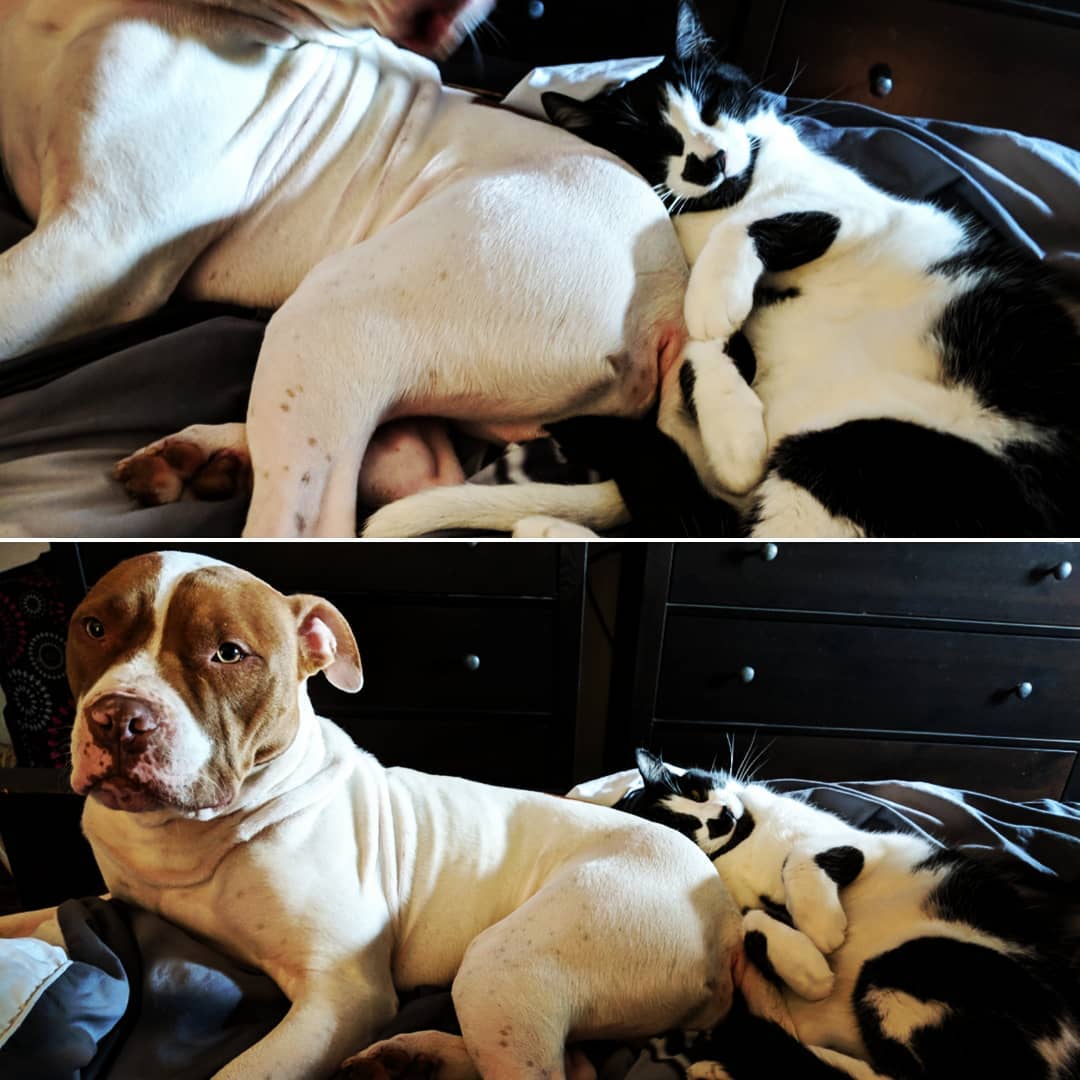
These tips are all great for adult dogs. We would never recommend taking a dog who has not been socialized properly into a dog park. Start by walking around the outside and get your rescue dog used to the new dogs, smells, and take a note of their body language!
Once your rescue dog feels happy find a quieter corner of the dog park and engages your dog in games and playtime with you. You may get a few nosey visitors to come over so keep a close eye on your dog and their body language. If there is a particularly friendly dog, speak to the owner and introduce your dogs slowly, and if necessary leash both of them.
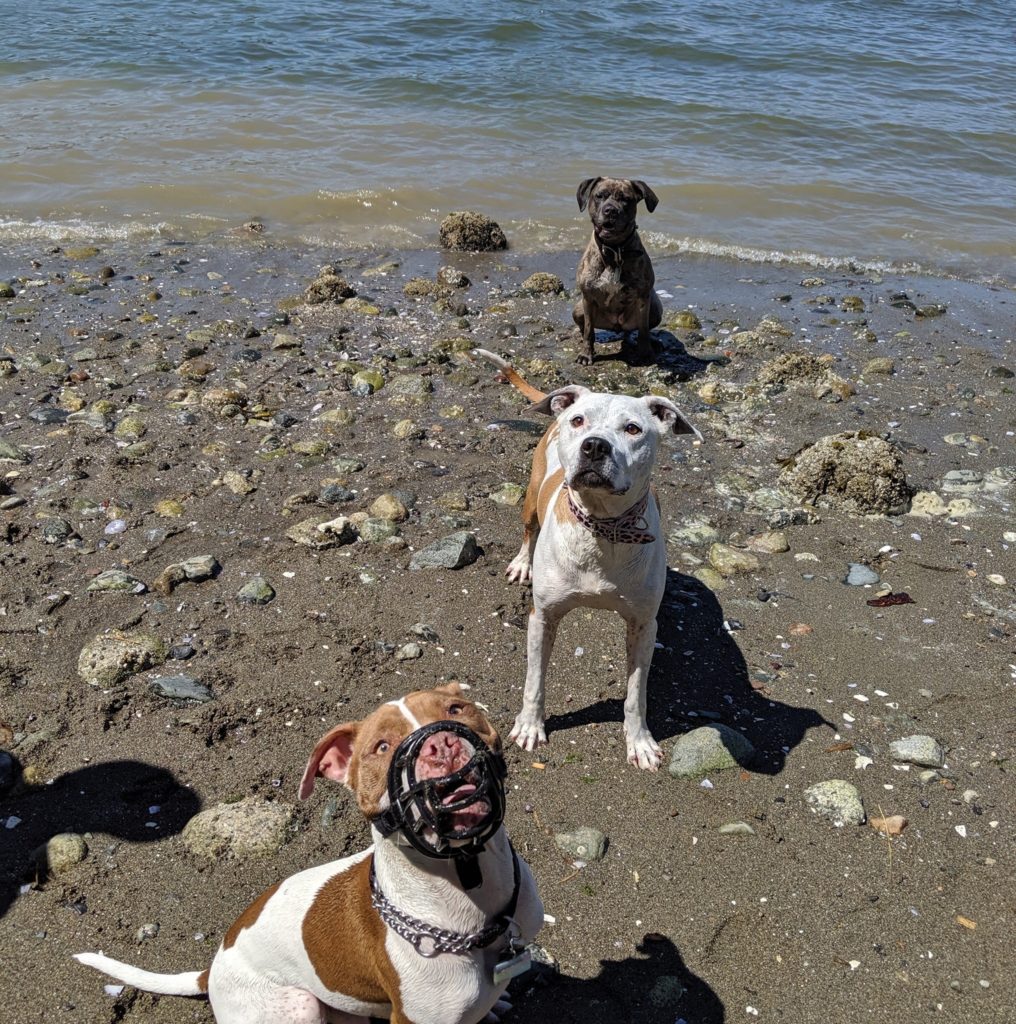
Socializing your dog takes time, it cannot be rushed and is completely up to your dog. If your rescue dog struggles and gets particularly distressed or aggressive around other dogs then a behaviorist would be the next step.
To help relax dogs when they go through stressful experiences we recommend NHV’s Lesstress our natural support for stress and anxiety. Lesstress will also support the immune system, helping your dog to feel their best. A blend of six calming herbs, Lesstress can help with
For some cases, we have noticed using NHV Matricalm and NHV Lesstress together is a good solution as well.
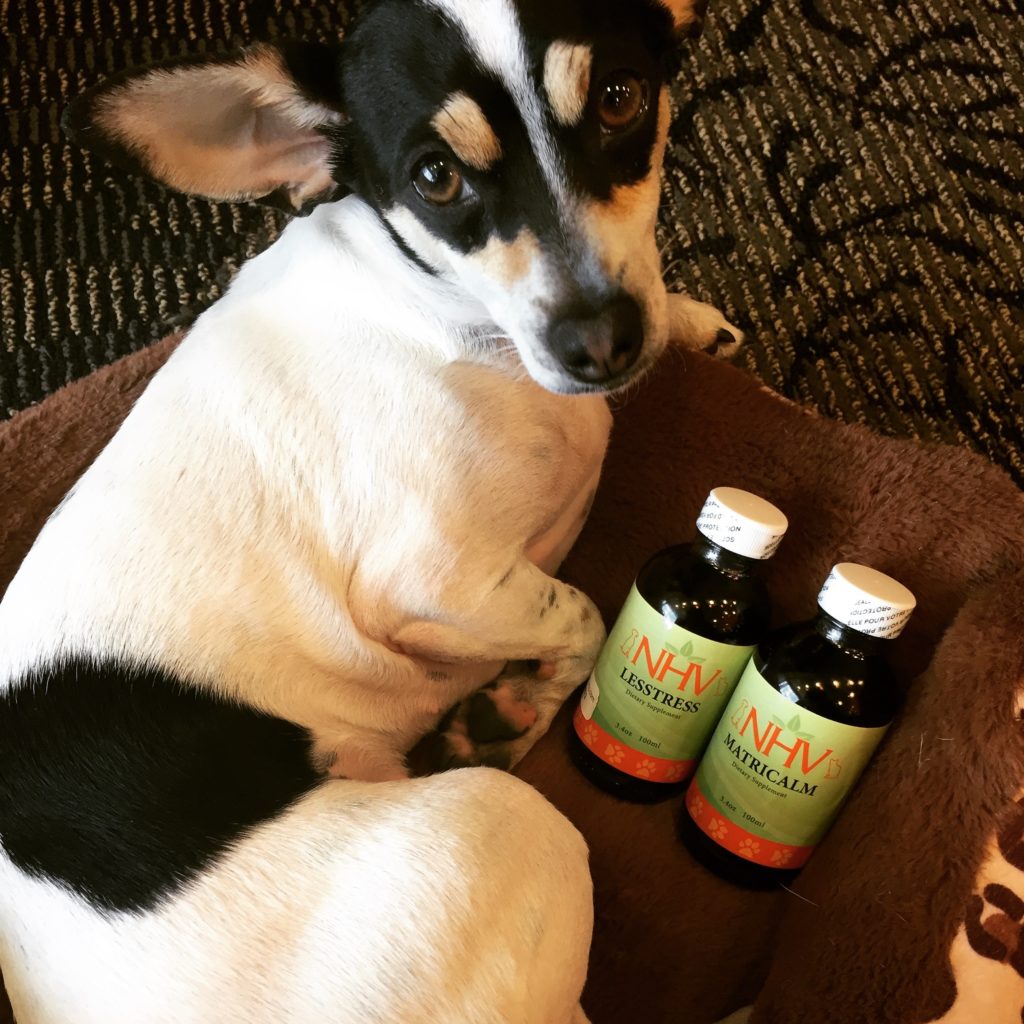
Matricalm is a calming formula of herbs that works for both dogs and cats. It works particularly well if you are dealing with a dog who is anxious and restless all the time.
With the right behavior, suitable supplements, and a healthy diet, your anxious, shy, or aggressive rescue dog can make a beautiful transformation. You will be able to share your loving companion with your friends and other dogs in the neighborhood (or maybe some cats, parrots, and toddlers too!) Your NHV Pet Experts are here to help.
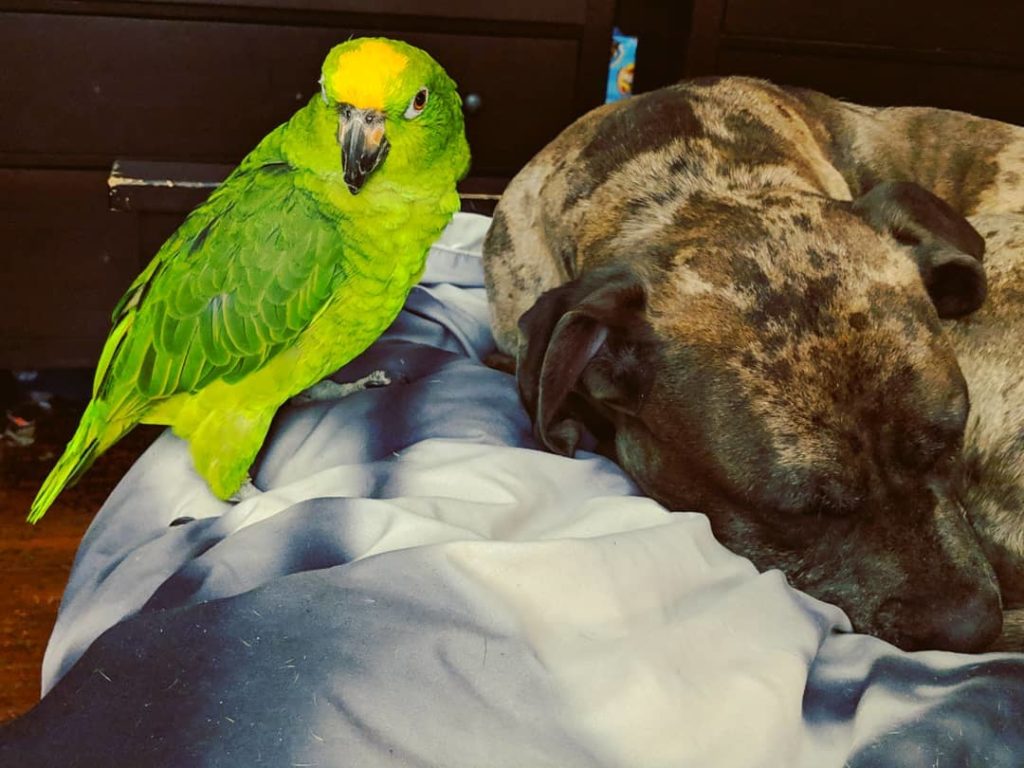
anxiety & aggression support

All-Natural Supplements for Parrots, Budgies and Other Birds
buy 2 and save $3
3 month supply for a small to medium size pet
Whether you have a cockatoo, a budgie, canary, or any kind of parrot, birds are very sensitive creatures and may be prone to stress. NHV Matricalm is formulated to help calm your bird’s nerves and help increase their body’s resistance to stress and disease.


Whether you have a cockatoo, a budgie, canary, or any kind of parrot, birds are very sensitive creatures and may be prone to stress. NHV Matricalm is formulated to help calm your bird’s nerves and help increase their body’s resistance to stress and disease.

Many pet birds are extremely intelligent and sensitive, so with the addition of other birds, loud sounds, loneliness or lack of stimulation, your bird may become stressed out, especially birds like Cockatoos, African Grays, and other species of parrots. Their heart rate and blood pressure may increase, and they may become irritated, excitable, and display behavior like feather picking, or screaming. Matricalm contains five calming herbs that help to reduce anxiety, increase feelings of relaxation and discourage behavioral issues related to a stressed-out nervous system.
Our all-natural care products are palatable for all types of birds, and their liquid formulations make them easy to hide in a favorite treat or daily meals.
Stress and anxiety may have detrimental effects on your bird's body and cause a lot of discomfort. Ingredients like chamomile and lemon balm can help calm excitability, nervousness and relieve discomfort. The sedative properties in Matricalm help to expel intestinal gas and help lower blood pressure to support feelings of calmness. Herbs like passion flower promote feelings of relaxation by increasing levels of gamma aminobutyric acid (GABA) in the brain, while valerian helps to improve sleep latency and sleep quality. Hops adds diuretic and sedative support to help relieve sleep disturbances and improve mood.
Formulated specifically for pets and pocket pets by a holistic vet and master herbalist with more than 20 years of experience! If you have any questions about bird health or stress-related behavior, Get in touch with an NHV Pet Expert - we’re always happy to help.
Made with the finest, organically grown, or ethically harvested herbs. Made specifically for pets, vet-formulated, and vet approved.
Matricalm
For birds: 1 drop per two pounds twice a day
How to Administer
Shake well before use. The easiest method is to use the dropper provide and place the drops into your bird's favorite treat. You can also use the dropper and squirt directly into the bird’s mouth.
For Best Results
Herbal dietary supplements are beneficial to the health and wellbeing of your pet and are safe for long-term use. Every pet responds to natural herbal supplements differently, therefore it is important to be consistent and administer the product daily. Supplements generally take two to four weeks to take effect, however this will vary from one animal to the next.
Product Storage
All NHV Natural Pet Products are pure herbal extracts and contain no artificial additives, preservatives or coloring. Shelf life after opening is 6 months and must be refrigerated after opening.
Cautions and Contraindications
Do not use Matricalm in pregnant or nursing animals. Speak to your vet before using our products. A second visit is recommended if your pet’s condition does not improve, or deteriorates after continued use of the supplements.
All information provided by NHV Natural Pet Products is for educational purposes only.
Many pet birds are extremely intelligent and sensitive, so with the addition of other birds, loud sounds, loneliness or lack of stimulation, your bird may become stressed out, especially birds like Cockatoos, African Grays, and other species of parrots. Their heart rate and blood pressure may increase, and they may become irritated, excitable, and display behavior like feather picking, or screaming. Matricalm contains five calming herbs that help to reduce anxiety, increase feelings of relaxation and discourage behavioral issues related to a stressed-out nervous system.
Our all-natural care products are palatable for all types of birds, and their liquid formulations make them easy to hide in a favorite treat or daily meals.
Stress and anxiety may have detrimental effects on your bird's body and cause a lot of discomfort. Ingredients like chamomile and lemon balm can help calm excitability, nervousness and relieve discomfort. The sedative properties in Matricalm help to expel intestinal gas and help lower blood pressure to support feelings of calmness. Herbs like passion flower promote feelings of relaxation by increasing levels of gamma aminobutyric acid (GABA) in the brain, while valerian helps to improve sleep latency and sleep quality. Hops adds diuretic and sedative support to help relieve sleep disturbances and improve mood.
Formulated specifically for pets and pocket pets by a holistic vet and master herbalist with more than 20 years of experience! If you have any questions about bird health or stress-related behavior, Get in touch with an NHV Pet Expert - we’re always happy to help.
Made with the finest, organically grown, or ethically harvested herbs. Made specifically for pets, vet-formulated, and vet approved.
Matricalm
For birds: 1 drop per two pounds twice a day
How to Administer
Shake well before use. The easiest method is to use the dropper provide and place the drops into your bird's favorite treat. You can also use the dropper and squirt directly into the bird’s mouth.
For Best Results
Herbal dietary supplements are beneficial to the health and wellbeing of your pet and are safe for long-term use. Every pet responds to natural herbal supplements differently, therefore it is important to be consistent and administer the product daily. Supplements generally take two to four weeks to take effect, however this will vary from one animal to the next.
Product Storage
All NHV Natural Pet Products are pure herbal extracts and contain no artificial additives, preservatives or coloring. Shelf life after opening is 6 months and must be refrigerated after opening.
Cautions and Contraindications
Do not use Matricalm in pregnant or nursing animals. Speak to your vet before using our products. A second visit is recommended if your pet’s condition does not improve, or deteriorates after continued use of the supplements.
All information provided by NHV Natural Pet Products is for educational purposes only.
anxiety & aggression support

Natural Help for Stress Reduction, Anxiety Relief, Behavioral Problems, and Aggression in Cats
buy 2 and save $3
3 month supply for a small to medium size pet
Matricalm is an all-natural supplement that provides anxiety and stress relief in cats and promotes calm behavior.

Matricalm is an all-natural supplement that provides anxiety and stress relief in cats and promotes calm behavior.
Help reduce aggressive behavior and provide anxiety and stress relief for your cat with Matricalm, a natural herbal product designed to help reduce excitability in your pet. Cats can become anxious or aggressive when exposed to other animals or to people they are unfamiliar with. When this occurs they may hiss, scratch, howl, or urinate inappropriately.
It’s important to remember that a significant cause of illness in pets results from stress. Helping to keep your cat stress free can help keep them healthier for longer. NHV Pet Experts also often recommend Matricalm for cats dealing with FIV, cancer, kidney issues, hyperthyroidism, and more.
See how NHV Matricalm helped kitty Kimba with yowling and stress.

Chamomile – Contains sedative properties. Chamomile also helps the immune system and has a strong affinity for the nervous system.
Passion Flower – An effective, non-addictive sedative. It helps increase gamma-aminobutyric acid (GABA) in the brain, which helps cause a feeling of relaxation. Passion Flower also has strong anti-inflammatory and pain-relieving properties.
Lemon Balm – An aromatic herb used for nervous disorders, excitability, and anxiety. In addition, lemon balm helps lower blood pressure.
Valerian – Helps stop heart palpitations, relaxes spasms, relieves pain, and regulates the nervous system. Valerian also helps improve sleep latency and sleep quality.
Hops – Tension, anxiety, and stress relief in cats. Hops have traditionally been used to help with mood disturbances, such as restlessness and anxiety.
Select your pet's weight to determine the correct dose.
To be taken twice daily. Determine your pet’s weight and then use the easy chart below to determine the correct dose. This is the minimum dosage.
Pet's Weight Dosage
0 - 15 lb = 0.5 ml
16 - 30 lb = 1.0 ml
31 - 45 lb = 1.5 ml
46 - 60 lb = 2.0 ml
61 - 75 lb = 2.5 ml
Over 75 lb = 3.0 ml
How to Administer
Shake well before use. The easiest method is to use the dropper provided and place the drops into your pet’s food or favorite treat. You can also use the dropper and squirt directly into the pet’s mouth.
Some pets can be finicky. If this occurs, consider hiding the drops in foods most pets love, such as fish, chicken, yogurt or a favorite treat. If your pet only eats dry food, then soak a few kibbles at feeding time.
For Best Results
Herbal dietary supplements are beneficial to the health and well-being of your pet and are safe for long-term use. Every pet responds to natural herbal supplements differently. Therefore, it is important to be consistent and administer the product daily. Supplements generally take two to four weeks to take effect; however, this interval will vary from one animal to the next.
Product Storage
All NHV Natural Pet Products are pure herbal extracts and contain no artificial additives, preservatives, or coloring. Shelf life after opening is six months, and it must be refrigerated after opening.
Cautions and Contraindications
Do not use Matricalm for cats as stress relief in pregnant or nursing animals. Speak to your vet before using our products. A second visit is recommended if your pet’s condition does not improve or deteriorates after the continued use of the supplements.
All information provided by NHV Natural Pet Products is for educational purposes only.
Help reduce aggressive behavior and provide anxiety and stress relief for your cat with Matricalm, a natural herbal product designed to help reduce excitability in your pet. Cats can become anxious or aggressive when exposed to other animals or to people they are unfamiliar with. When this occurs they may hiss, scratch, howl, or urinate inappropriately.
It’s important to remember that a significant cause of illness in pets results from stress. Helping to keep your cat stress free can help keep them healthier for longer. NHV Pet Experts also often recommend Matricalm for cats dealing with FIV, cancer, kidney issues, hyperthyroidism, and more.
See how NHV Matricalm helped kitty Kimba with yowling and stress.

Chamomile – Contains sedative properties. Chamomile also helps the immune system and has a strong affinity for the nervous system.
Passion Flower – An effective, non-addictive sedative. It helps increase gamma-aminobutyric acid (GABA) in the brain, which helps cause a feeling of relaxation. Passion Flower also has strong anti-inflammatory and pain-relieving properties.
Lemon Balm – An aromatic herb used for nervous disorders, excitability, and anxiety. In addition, lemon balm helps lower blood pressure.
Valerian – Helps stop heart palpitations, relaxes spasms, relieves pain, and regulates the nervous system. Valerian also helps improve sleep latency and sleep quality.
Hops – Tension, anxiety, and stress relief in cats. Hops have traditionally been used to help with mood disturbances, such as restlessness and anxiety.
Select your pet's weight to determine the correct dose.
To be taken twice daily. Determine your pet’s weight and then use the easy chart below to determine the correct dose. This is the minimum dosage.
Pet's Weight Dosage
0 - 15 lb = 0.5 ml
16 - 30 lb = 1.0 ml
31 - 45 lb = 1.5 ml
46 - 60 lb = 2.0 ml
61 - 75 lb = 2.5 ml
Over 75 lb = 3.0 ml
How to Administer
Shake well before use. The easiest method is to use the dropper provided and place the drops into your pet’s food or favorite treat. You can also use the dropper and squirt directly into the pet’s mouth.
Some pets can be finicky. If this occurs, consider hiding the drops in foods most pets love, such as fish, chicken, yogurt or a favorite treat. If your pet only eats dry food, then soak a few kibbles at feeding time.
For Best Results
Herbal dietary supplements are beneficial to the health and well-being of your pet and are safe for long-term use. Every pet responds to natural herbal supplements differently. Therefore, it is important to be consistent and administer the product daily. Supplements generally take two to four weeks to take effect; however, this interval will vary from one animal to the next.
Product Storage
All NHV Natural Pet Products are pure herbal extracts and contain no artificial additives, preservatives, or coloring. Shelf life after opening is six months, and it must be refrigerated after opening.
Cautions and Contraindications
Do not use Matricalm for cats as stress relief in pregnant or nursing animals. Speak to your vet before using our products. A second visit is recommended if your pet’s condition does not improve or deteriorates after the continued use of the supplements.
All information provided by NHV Natural Pet Products is for educational purposes only.
Published: September 13, 2019